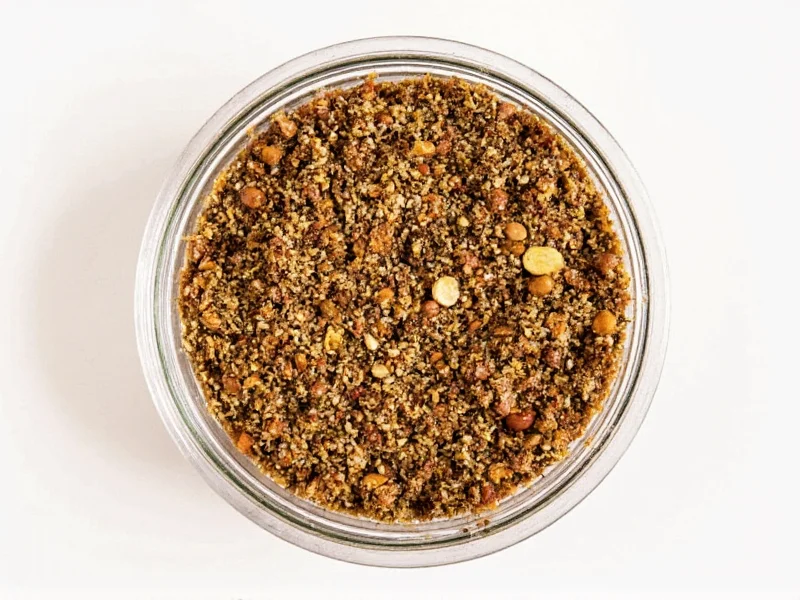Understanding how to effectively incorporate Morton Seasoning into your cooking repertoire can significantly elevate everyday meals. This comprehensive guide explores the culinary applications, flavor chemistry, and practical usage techniques for this popular seasoning blend.
Understanding Morton Seasoning Composition
Morton Seasoning's effectiveness stems from its carefully balanced formulation. Unlike single-ingredient seasonings, this blend combines multiple flavor components that work synergistically. The primary ingredients typically include:
- Salt (reduced sodium version contains 45% less sodium than regular salt)
- Paprika for color and mild sweetness
- Garlic powder for savory depth
- Onion powder for aromatic complexity
- Black pepper for subtle heat
- Natural flavors enhancing overall profile
This combination creates what food scientists call "flavor layering"—where multiple taste elements build upon each other rather than competing. The reduced sodium version maintains flavor integrity while addressing modern dietary preferences, making it suitable for health-conscious cooking without sacrificing taste.
Optimal Culinary Applications for Morton Seasoning
Professional chefs and home cooks alike appreciate Morton Seasoning's versatility across various cooking methods and food categories. The seasoning's balanced profile makes it particularly effective for enhancing proteins while complementing vegetable dishes.
| Food Category | Recommended Application | Usage Timing | Quantity Guidelines |
|---|---|---|---|
| Poultry | Rub for chicken, turkey, duck | Before cooking (30+ minutes) | 1 tsp per pound |
| Beef & Pork | Steak rub, roast seasoning | Before searing or roasting | 1.5 tsp per pound |
| Vegetables | Roasted, grilled, or sautéed | Before or during cooking | 1/2 tsp per serving |
| Seafood | Fish fillets, shrimp | Immediately before cooking | 3/4 tsp per pound |
| Grains & Legumes | Rice, quinoa, beans | During cooking | 1/2 tsp per cup uncooked |
Advanced Cooking Techniques with Morton Seasoning
Mastering Morton Seasoning usage involves understanding how it interacts with different cooking processes. The seasoning's effectiveness varies based on application method and timing:
Dry Rub Applications
For meats, applying Morton Seasoning as a dry rub 30-60 minutes before cooking allows flavors to penetrate the surface. The salt component helps break down proteins slightly, creating a more tender texture while the spices infuse flavor. When using this technique for chicken or pork, cover the seasoned meat and refrigerate during the resting period for optimal results.
Finishing Applications
Unlike some delicate herbs that lose potency with heat, Morton Seasoning maintains its flavor profile through cooking. However, for certain dishes like grilled vegetables or finished meats, a light additional sprinkle just before serving enhances aromatic qualities without overwhelming other flavors.
Marinade Integration
When creating marinades, Morton Seasoning serves as an excellent base component. Combine 2 tablespoons of the seasoning with 1/4 cup oil, 2 tablespoons acid (vinegar or citrus juice), and additional herbs for a balanced marinade that tenderizes while flavoring. The seasoning's consistent particle size ensures even distribution throughout the marinade.
Comparative Analysis: Morton Seasoning vs. Alternatives
Understanding how Morton Seasoning compares to similar products helps determine optimal usage scenarios:
- Compared to generic all-purpose seasonings: Morton's formulation typically contains more consistent spice ratios and quality control, resulting in reliable flavor outcomes batch after batch.
- Compared to seasoned salts: Morton Seasoning generally contains less sodium while providing more complex flavor notes through additional spice components.
- Compared to single-ingredient seasonings: The blend offers convenience and balanced flavor that would require multiple individual spices to replicate.
- Compared to regional spice blends: While specialized blends like Cajun or Italian seasoning serve specific cuisine purposes, Morton Seasoning functions as a versatile foundation suitable for multiple culinary traditions.
Common Usage Mistakes to Avoid
Even experienced cooks sometimes misapply seasoning blends. When working with Morton Seasoning, avoid these common pitfalls:
- Over-application: Because it contains salt, adding additional salt to dishes already seasoned with Morton Seasoning can result in oversalted food. Remember that 1 teaspoon of Morton All-Purpose Seasoning contains approximately 490mg sodium.
- Incorrect timing: Adding the seasoning too late in the cooking process for certain dishes (like soups or stews) doesn't allow flavors to properly integrate. For liquid-based dishes, add early enough for flavors to meld but not so early that volatile compounds evaporate.
- Storage issues: Keeping the container in humid environments or near heat sources degrades flavor compounds. Store in a cool, dark place with the lid tightly sealed to maintain freshness for up to 18 months.
- Misunderstanding reduced sodium versions: The reduced sodium variant still contains significant sodium—adjust additional salt accordingly rather than assuming it's sodium-free.
Recipe Integration Examples
Practical applications demonstrate Morton Seasoning's versatility across different meal components:
Roasted Vegetable Medley
Toss 2 pounds mixed vegetables (potatoes, carrots, bell peppers) with 1 tablespoon olive oil and 1.5 teaspoons Morton Seasoning. Roast at 400°F for 25-30 minutes until tender and caramelized. The seasoning enhances natural sweetness while creating appealing browning.
Simple Pan-Seared Chicken
Season 4 boneless chicken breasts with 2 teaspoons Morton Seasoning. Let rest 30 minutes, then sear in hot skillet with 1 tablespoon oil for 6-7 minutes per side until golden and cooked through. The seasoning creates a flavorful crust while keeping interior moisture.
Flavor-Enhanced Rice Pilaf
Add 1 teaspoon Morton Seasoning to 1 cup uncooked rice along with 2 cups broth. Cook according to package directions. The seasoning infuses throughout the grains, creating a side dish with complex flavor that complements various main courses.
Storage and Freshness Considerations
Proper storage maintains Morton Seasoning's flavor integrity. Keep the container in a cool, dark place away from heat sources like stoves or dishwashers. The ideal storage temperature ranges between 50-70°F (10-21°C). Always use dry utensils when handling the seasoning to prevent moisture introduction, which can cause clumping and flavor degradation.
For extended freshness, consider transferring the seasoning to an airtight container if the original packaging doesn't reseal effectively. When properly stored, Morton Seasoning maintains optimal flavor for 12-18 months after opening. Check freshness by aroma—vibrant, complex scent indicates peak quality, while dull or musty odors suggest degradation.











 浙公网安备
33010002000092号
浙公网安备
33010002000092号 浙B2-20120091-4
浙B2-20120091-4